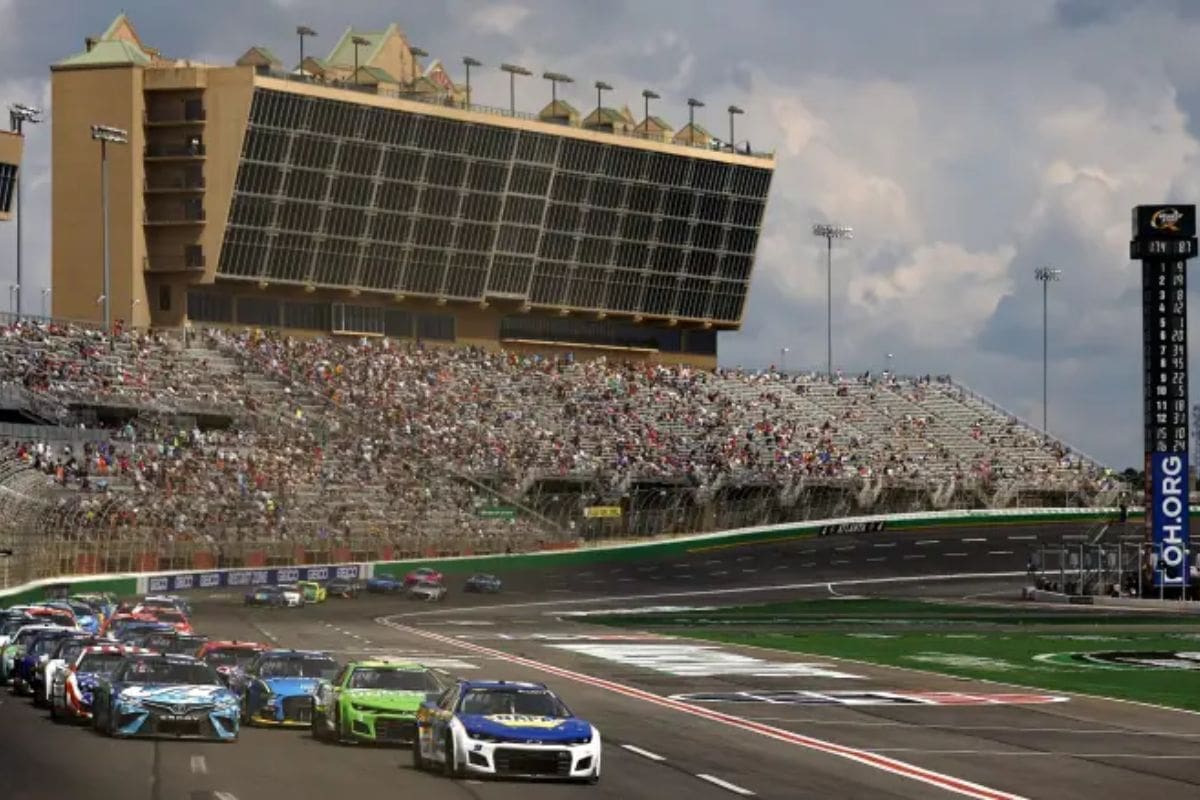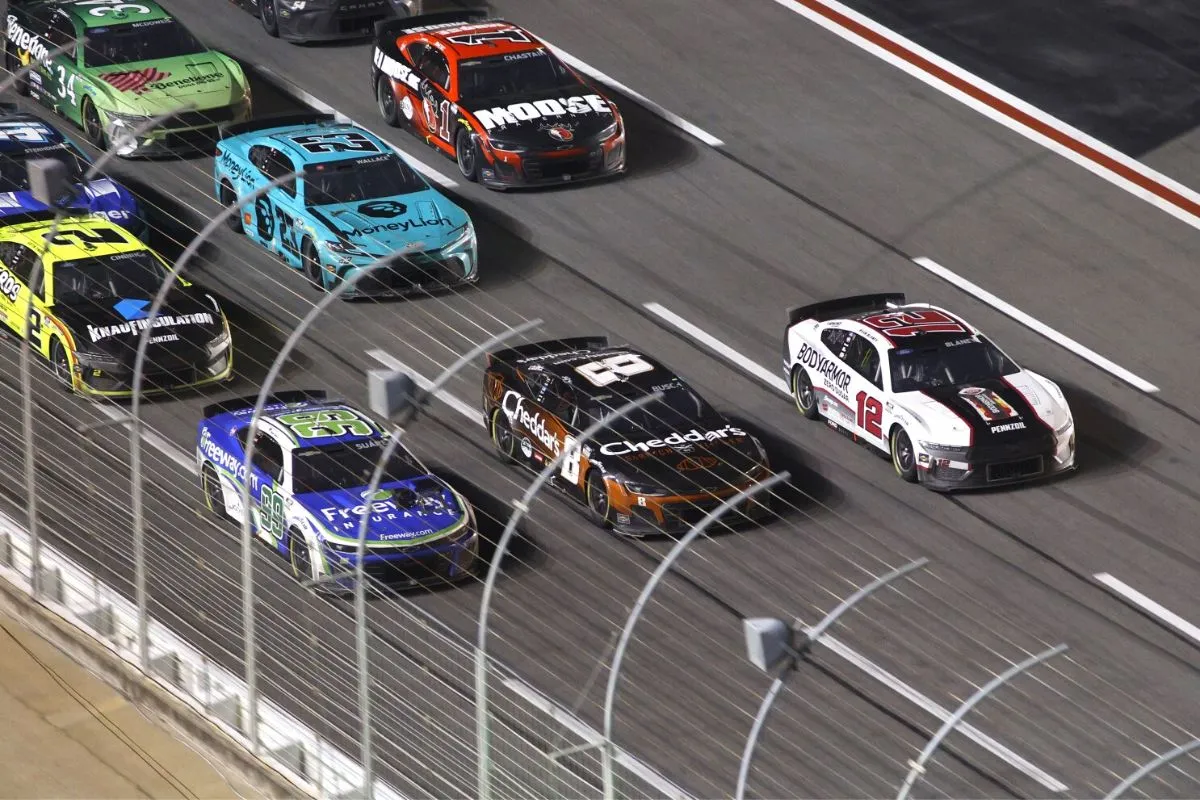The Brain-Bending Challenge of Atlanta: Atlanta Motor Speedway stands as a alarming area within the NASCAR lap, where the unique characteristics of its quad-oval layout and abrasive surface create a intimidating mental landscape for drivers. The necessity for rapid decision-making amid tightly packed racing not only tests physical skill but greatly challenges logical ability to last. Insights from seasoned drivers, including Chase Briscoe and Jimmie Johnson, reveal a consensus on the track’s unforgiving nature. As playoff contenders fight with these mental demands, one must consider how strategy intertwines with psychological durability, leading to a crucial question: what truly defines success at Atlanta?
Key Highlights
- Atlanta Motor Speedway’s high-speed environment demands rapid decision-making and intense mental focus from drivers throughout the race.
- The track’s unique configuration and steep banking create a complex challenge that distinguishes it from traditional superspeedways.
- Drivers face heightened cognitive load due to constant communication with spotters and the need for tactical positioning during tight racing.
- Tire degradation significantly impacts race strategy, requiring mental adaptability as grip diminishes quickly over laps.
- Maintaining mental resilience is crucial for success, as the psychological demands of racing at Atlanta can lead to increased accident risk.
Overview of Atlanta Motor Speedway and its Characteristics
Atlanta Motor Speedway stands as a remarkable example of modern NASCAR engineering, characterized by its unique 1.54-mile quad-oval layout and steep 28-degree banking in the turns. This configuration creates an environment where the principles of aerodynamics and tire management are pushed to their limits. The deep banks improve grip, allowing cars to maintain higher speeds while directing the curves, yet this same feature can lead to rapid tire degradation due to the extreme sharp of the asphalt.
The long straightaways at Atlanta facilitate high-speed racing that echoes the dynamics of a superspeedway, providing a deceptive sense of security to drivers who may underestimate the track’s challenges. This interplay between speed and control transforms Atlanta into a venue where strategy and skill must align flawlessly. As drivers engage in tight packs, the intensity of competition escalates, necessitating acute situational awareness and responsive decision-making.
Furthermore, the anticipation surrounding the upcoming 2024 Cup Series playoffs amplifies the stakes at Atlanta. As the initial of three tracks in Round 1, it serves as a litmus test for playoff contenders. The expectation of a wild card race akin to Daytona and Talladega highlights the unpredictability inherent in this venue.
With the combination of high speeds, tire management, and competitive strategy, Atlanta Motor Speedway demands not only physical skill but also a sharp mental acuity, solidifying its reputation as one of NASCAR’s most challenging arenas.
Chase Briscoe’s Insights on the Track’s Challenges
Often regarded as one of the most mentally taxing environments in NASCAR, Chase Briscoe’s insights illuminate the unique challenges presented by Atlanta Motor Speedway. He emphasizes that the track’s demanding nature enhances the mental strain on drivers, stating, “I think it’s the most mentally draining racetrack we have on the schedule.” Unlike Daytona and Talladega, where high-speed drafting is the primary focus, Atlanta’s configuration accelerates the pace of events, requiring drivers to process information rapidly and respond accordingly.
“I think it’s the most mentally draining racetrack we have on the schedule. Daytona and Talladega have always been mentally draining, but you go to Atlanta and things happen four times the speed because you lose a mile with that racetrack.”-(BRISCOE)
Briscoe’s perspective reveals that the combination of high speeds and the necessity to heed spotter instructions further complicates the driving experience. The mental gymnastics required to maintain situational awareness while maneuvering the track is unmatched.
As Briscoe articulates, the multifaceted challenges of Atlanta Motor Speedway differentiate it from conventional superspeedways. The need for acute mental acuity, coupled with the physical demands of high-speed racing, positions this venue as a formidable test not only of skill but also of mental resilience. Briscoe’s insights highlight the integral role mental fortitude plays in achieving success on this challenging circuit, a sentiment echoed by peers in the NASCAR community.
Other Drivers’ Opinions on the Toughness of Atlanta Motor Speedway
Drivers’ perspectives on the challenges presented by Atlanta Motor Speedway reveal a consensus on the track’s demanding nature. Many competitors acknowledge that while skill is crucial, external factors can heavily influence race outcomes. As Martin Truex Jr. articulated, “The challenge is being in the right position at the end and not getting caught up in a wreck, which takes some good fortune sometimes.” This sentiment highlights the unpredictability inherent in racing at Atlanta.
The drivers’ opinions can be distilled into several key themes regarding the difficulties of the track:
- High-Speed Planning: The need for tactical positioning is amplified by the high-speed nature of the track, requiring constant vigilance.
- Risk of Wrecks: The tight racing often leads to accidents, making it critical for drivers to balance aggression and caution.
- Dependence on Others: Success is not solely in a driver’s hands; they must navigate the actions of their competitors, which adds another layer of complexity.
- Mental Fortitude: The psychological demands of maintaining focus and making quick decisions under stress cannot be overstated.
These insights reflect a shared understanding among drivers: Atlanta is not just a test of speed, but a multifaceted challenge that combines skill, planning, and a degree of chance.
Therefore, mastering this track requires not only technical proficiency but also an acute awareness of the dynamics at play among competitors.
Jimmie Johnson’s Perspective and Upcoming Race Details
Amid the intense anticipation for the upcoming Quaker State 400, Jimmie Johnson offers an honest assessment of the challenges posed by Atlanta Motor Speedway. The veteran driver articulates the complexity of racing on a track characterized by its abrasive surface, stating, “That track is so abrasive. You get one lap with grip and then everything from there is downhill.”
This succinct observation encapsulates the mental and physical strain that drivers endure at Atlanta, where tire degradation plays a vital role in race strategy and performance.
The Quaker State 400, set to commence at 3:00 p.m. on Sunday, September 8, marks a fundamental milestone in the NASCAR calendar, particularly as it serves as the playoff opener. The unique characteristics of Atlanta Motor Speedway require drivers to not only navigate the challenging turns but also to anticipate the rapid decline in grip, which can drastically alter race dynamics.
As teams prepare for this brain-bending contest, Johnson’s insights serve as a reminder that the mental battle is as notable as the physical challenge. With the stakes raised for playoff contenders, the tactical decisions made on the track will ultimately determine their fate in this high-pressure environment.
The upcoming race promises a compelling spectacle as drivers like Johnson confront the relentless demands of Atlanta.
News in Brief: The Brain-Bending Challenge of Atlanta
Atlanta Motor Speedway represents the intersection of mental sharpness and physical skill in NASCAR racing. The track’s distinctive characteristics compel drivers to exhibit adaptability and planned thinking in high-pressure conditions. Insights from seasoned competitors highlight the psychological demands inherent in guide the quad-oval layout. As the playoff contenders prepare for upcoming races, the necessity for giving strategic decision-making remains important, solidifying Atlanta’s status as a premier testing ground for elite drivers.
ALSO READ: Goodyear’s New Tires Can’t Save NASCAR—Are Outdated Tracks Holding Back the Action?





